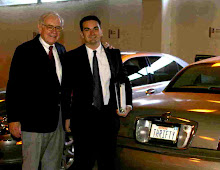Some background on bankruptcy
These investments have been successful because they were purchased for very little and, because of the nature of the Chapter 11 system, with recently cleansed balance sheets. Having said that, investing in such companies takes much more knowledge and awareness than does a typical investment. This is why they are so risky.
Now, I give credit where credit is due, and credit for bringing the following stock pick to my attention is solely due to my friend Ryan Avola. His pick was US Gypsum, or USG. This company has recently emerged from Chapter 11 with Berkshire Hathaway holding 18% of the equity. Before I get in to this company in particular, I will provide a little background on the system, as I see it.
Bankruptcy is always an undesirable circumstance for both creditors and debtors. But the legal system designed to deal with debtor default and insolvency that exists in the United States seeks to minimize the economic harm caused. The corporate bankruptcy system is predicated the notion that, if creditors work together, they stand to benefit more than if they each attempted to collect from a debtor individually. That is, the system assumes that orderly collection among creditors is better and more efficient in the long run than the alternative, which is often collecting nothing at all.
When a company files Chapter 7 bankruptcy, it is safe to say all hope is lost. Chapter 7 liquidation is usually an acknowledgement that any future earning ability of the company is dubious. But when a firm enters Chapter 11 bankruptcy – a reorganization analogous to Chapter 13 for individuals – it usually has a decent business, else it couldn’t convince a bankruptcy judge or its creditors to approve the reorganization.
Title 11 of the United States Code is explicit in its explanation of the way bankruptcy shall be administered. In Chapter 5 it details “priorities.” Each class of claimant is to be paid in full, in the order of priority that the code specifies, before any claimant in a subordinate class is paid. Claimants in a class which cannot be paid in full are then paid on a pro-rata basis. Equity holders, it should be noted, are last on the priority list since they are the residual claiminants - this is just the way corporations work. This seems simple enough, but the code also empowers the bankruptcy judge with extremely broad power, more than any other federal judge the court system, to make exceptions as he sees prudent. This creates what is commonly referred to in the academic literature as “absolute priority rule,” or “APR,” violation.
Lawrence Weiss, in a 1990 Journal of Financial Economics paper documents the widespread nature of APR violation. In a sample of 37 firms to file between 1979 and 1986, Weiss finds that the rule was violated in 29 cases. This is in direct contradiction of statute and underscores the huge power the bankruptcy judge can exercise. This means that equityholders, who are in principle the residual claimants of the business, may in fact be repaid before some debtholders. This can cause all sorts of problems. For one thing, these debtholders will demand higher rates of interest, which changes the firm’s cost of capital. Thus, there is a hidden, “indirect,” cost to bankruptcy.
As unfair as this may seem, as a practical matter, absolute priority rule violation may be a necessity. This is because projections about the firm’s Chapter 11 in-bankruptcy performance must be made to ascertain how far down on the priority list repayment will trickle. Equityholders have an incentive to make overly optimistic projections, since that will increase the likelihood that repayment trickles down to them. But all claimants must approve the plan for reorganization. Hence, there is a large potential for conflict in bankruptcy proceedings. The only way to resolve this conflict is to empower the judge with final authority.
All this APR violation quite frequently creates opportunities for individual investors. Sometimes, things go as they should. Worldcom, for example, is a firm whose equityholders got squat. In many of these instances the debtholders are repaid with shares of stock in the newly emerged firm, and the old shares are cancelled. When they are, buying corporate debt is a logical way to get ahold of the new stock. When they are not, investors need to consider the causes for the bankruptcy and the firm's prospects with the reorganization behind it. In some cases, as appears to be the case with USG, the stock may not get cancelled and could indeed look like a great investment.

